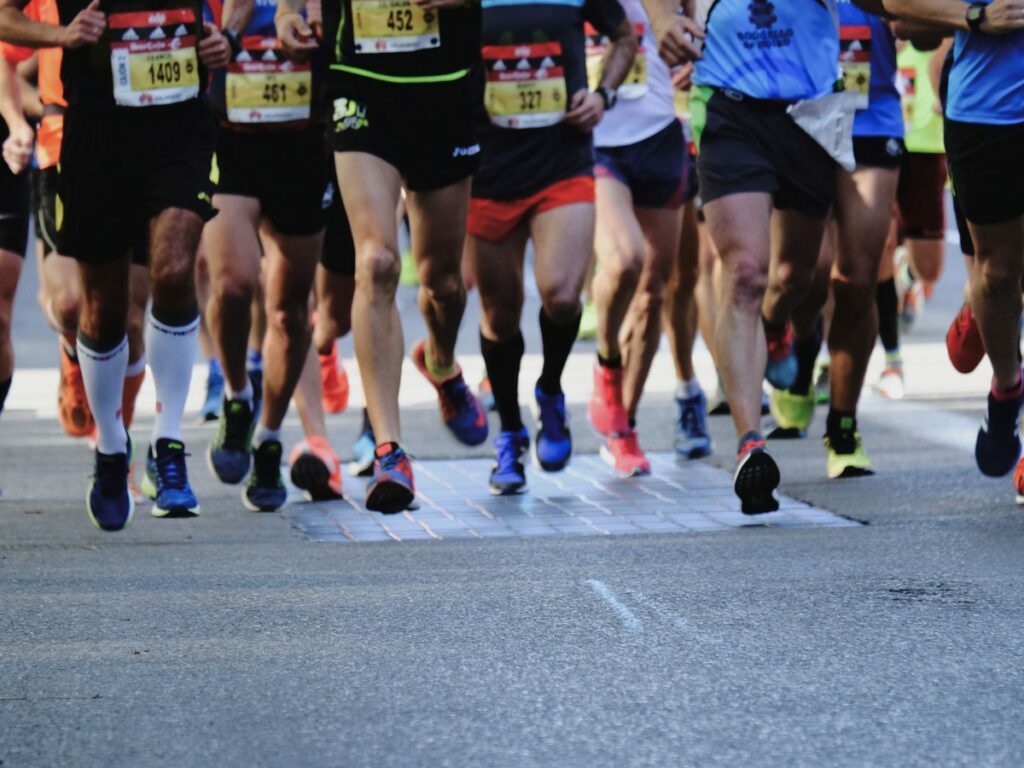3 ways to run a tune-up race
Nail your performance on race day by practising in a shorter event

There’s a fine balance between challenging your legs and ensuring ample recovery time when you’re building up to a big race. Some runners schedule a tune-up race into their training plan—a race that is included as part of their training. If you decide to include a practice race in the lead-up to your main event, there are a few ways you can consider running it.
Elisabeth Scott, a Connecticut-based running coach and host of the Running Explained podcast, shares how runners should approach a tune-up session—a race that does not require a full taper or recovery time afterward.

What is a tune-up race?
“Tune-up races are almost always a shorter distance than your goal race distance; this means a half marathon is a tune-up for a marathon, a 10K is a tune-up for a half marathon, etc.,” Scott explains. A tune-up race should be slotted in ideally between four and eight weeks before your goal race, though this may be adjusted depending on your goal.
“A tune-up race will help you practise your race-day routine, strategy, fuelling, hydration and other skills you’ll need for your goal race,” Scott says. She explains that a tune-up race can be done in a few ways—as an all-out effort for that specific race distance, at a target goal-pace effort for your goal race, or something else as designated by your goals, your training plan or your coach.
“Don’t get discouraged if your tune-up race isn’t as fast as you think it should be; you’re racing on tired legs in the middle of your training cycle,” says Scott. “While a tune-up race can help benchmark your current fitness, it’s OK if you don’t PR or hit your exact goal paces; you are not losing fitness, you’re just fatigued.” Here’s how to figure out what you should aim for in that race-before-the-race.

An easy effort
If you’re new (or returning) to racing and want to shake off some of those pre-race jitters, a tune-up event can be ideal. Scott also suggests this option for runners who need to work on performance anxiety or are looking to participate in a particular event (for example, your co-workers have all signed up for a 5K fundraiser) without it taking a huge toll on their legs. “Great for getting the race-day experience without the fatigue” she says.
If you’re a runner with an intensely competitive spirit and a strong temptation to go hard, this option might be one to skip.

A workout with a goal pace
Want to finesse your ability to run at your goal pace, or make sure your fuelling plan allows you to stay strong until you hit that finish line? This one is for you—running a shorter distance than your goal race as a practice event at goal pace.
Scott says this option is “great for runners who can handle long-run workouts with significant chunks of goal-race pace (for example, executing a marathon-pace workout in a half-marathon) and want to practise their pacing skills, gear and fuelling strategies.”

As a race
If you’re feeling the need to go all-out and see where you stand, you can plan a harder effort before your goal race—just make sure to schedule it well before you plan to taper, and make sure the distance is short enough that it won’t make you overly fatigued.
Scott says this choice is perfect for runners “looking to practise the skill of racing (pushing yourself to the edge of your ability for a specific distance) and for benchmarking your current fitness to help with goal-setting for your A race.”

